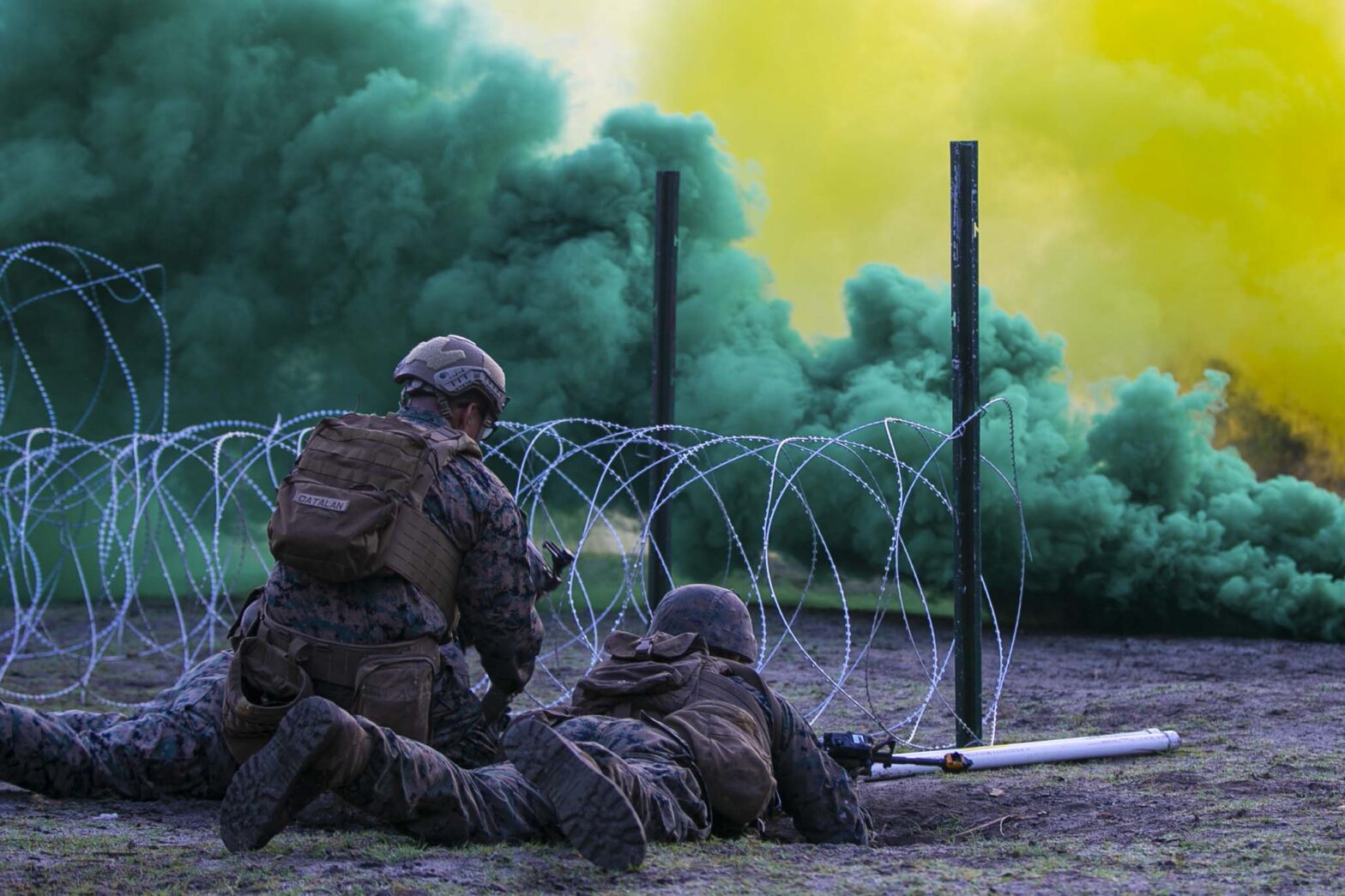Visual motion sensitivity is common post-concussion. [1-2]
Visual motion sensitivity is hypersensitivity to visual stimuli. It can trigger headaches, dizziness, and imbalance.
It is common for someone post-concussion to be overstimulated by walking through a grocery store or down a crowded hallway. These individuals often need to undergo physical therapy to desensitize them to visual inputs and return to a “normal” level.
But a “normal” level is well below the visual demands of individuals in the tactical community.
You perform in extreme environments and want to train for high performance in any condition.
And the research is lacking when it comes to the impact of repeated subconcussions on visual motion sensitivity.
So, we take action to develop this skill for performance to maintain readiness for extreme and unpredictable conditions.
Here’s how to start:
Lay the foundation:
- Pick a large, high contrast target that will move side to side with a simple background.
- Stand still and follow the target by moving either your head or torso to keep it in focus.
- Objectively measure the speed of the target- increase target speed as you are able.
*** You must keep the target in focus to increase the speed. Don’t increase speed or move on to more advanced levels if unable to keep target focus or if you experience imbalance, headache, or dizziness with the exercise. You typically want to perform for 30 seconds max, then rest about a minute before trying again.
Start adding chaos:
- Make the target small
- Create a low contrast target (meaning it blends into the background)
- Have a complex background that the target moves over (the more complex the background, the more visual stimulus you must filter out)
- Create a more complex target movement pattern (up/down/side/side/circles/etc.)
- Add in appropriate footwork- you start moving with speed and precision
Building the foundation isolates the skill to optimize in a controlled environment, then you integrate that with the more complex situations that are reflective of the real-life demands.
References:
- Allen, J. W., Trofimova, A., Ahluwalia, V., Smith, J. L., Abidi, S. A., Peters, M. A. K., … & Gore, R. K. (2021). Altered processing of complex visual stimuli in patients with postconcussive visual motion sensitivity. American Journal of Neuroradiology, 42(5), 930-937.
- Mucha, A., Collins, M. W., Elbin, R. J., Furman, J. M., Troutman-Enseki, C., DeWolf, R. M., … & Kontos, A. P. (2014). A brief vestibular/ocular motor screening (VOMS) assessment to evaluate concussions: preliminary findings. The American journal of sports medicine, 42(10), 2479-2486.
